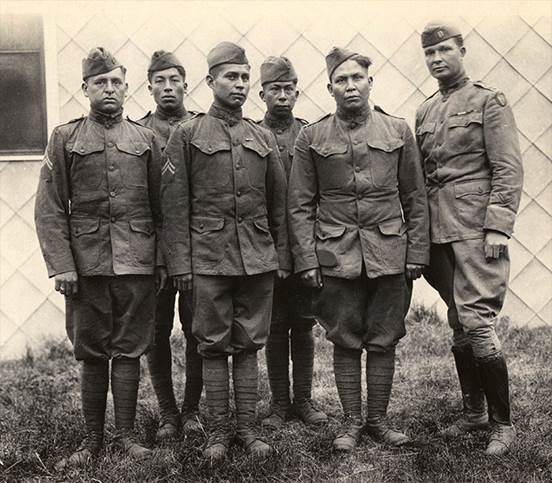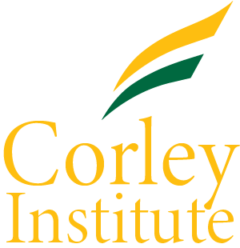November is Native American Indian Heritage Month and November 11 is Veteran’s Day.
The Smithsonian’s National Museum of the America Indian has excellent resources for those seeking to enhance their understanding on Native American history and cultures, including information on Native American veterans. Most Americans have only been exposed to part of the story, as told from a single perspective through the lenses of popular media and textbooks. The Museum’s Native Knowledge 360° (NK360°) project provides educational materials, virtual student programs, and teacher training that incorporate Native narratives, more comprehensive histories, and accurate information to enlighten and inform teaching and learning about Native America. NK360° challenges common assumptions about Native peoples and offers a view that includes not only the past but also the vibrancy of Native peoples and cultures today.
Below are some of the most frequently asked questions, or little known facts, about Native Americans, as well as information on upcoming events:
-
- What is the correct terminology: American Indian, Indian, Native American, or Native?
All of these terms are acceptable. The consensus, however, is that whenever possible, Native people prefer to be called by their specific tribal name. In the United States, Native American has been widely used but is falling out of favor with some groups, and the terms American Indian or indigenous American are preferred by many Native people.
-
- How important was Sacagawea to the Lewis and Clark Expedition?
Between 1804 and 1806, Sacagawea, a young Shoshone woman; her husband, a French Canadian fur trader; and their infant son accompanied the U.S. expedition led by Meriwether Lewis and William Clark from Fort Mandan on the Missouri River in present-day North Dakota to the mouth of the Columbia River on the Pacific Coast and back. The purpose of the expedition was both to study the area’s geography—its plants, animals, waterways, etc.—and to learn how it could be developed for trade. Over time, Sacagawea’s importance to the expedition has taken on legendary proportions. It is true, however, that she was a valuable member of the expedition, identifying landmarks in her homelands and helping to communicate with other Indians. Her brother also provided the expedition with horses and supplies, and saved them from a dangerous winter in the Rocky Mountains. Sacagawea’s accompanying Lewis and Clark with her baby let other tribes know that this was not a war party. She also shared her knowledge of a great number of local plants, useful sources of medicine, and food.
-
- What is the correct pronunciation of Sacagawea?
Listen to the 35 second clip here:
-
- Do Indians have to pay taxes?
Yes, Indians have to pay federal income taxes, the same as other American families. The confusion may lie in the different status of Indian tribes, which are governments and, as such, not taxable by states or the federal government. In addition, U.S. taxes are not levied on federal payments used to compensate individual Indians for the taking of private land, such as treaty land, or the income from trust land, which is held by the United States. With regard to state taxes, Indians do not pay taxes on income earned on reservations or state sales taxes for goods purchased on reservations, but Indians who live and work off reservations do pay those taxes. And because tribes are governments, they have the right to tax people—tribal members and non-members—living on their reservations.
-
- Did you know? Native American Code Talkers
Tens of thousands of Native Americans joined the U.S. armed forces during World Wars I and II (44,000 Native Americans served in World War II; the entire population of Native Americans was less than 350,000 at the time). Native Americans have risen above unparalleled challenges to defend our nation with pride and honor, often providing unique talents critical to the war effort.
Beginning in the late 1800s, Native American children were forcibly placed into government- and church-sponsored boarding schools with the goal of destroying their culture. Despite the governments’ attempts to eliminate indigenous languages, those languages survived and became crucial to the Allied cause. Late in World War I, the military realized the usefulness of indigenous languages in wartime communication.

They assembled what were called telephone squads, groups of Native soldiers who used their languages to create coded messages. During World War II, the United States formalized the use of Native languages, asking soldiers of many different tribal nations to work as cryptologists who developed secret battle communications based on their languages—and America’s enemies never deciphered the coded messages they sent.
Code Talkers, as they were known after World War II, are twentieth-century American Indian heroes who significantly aided the victories of the United States and its allies.
The story of these brave intelligencers is told in the National Museum of the American Indian’s traveling exhibition, Native Words, Native Warriors. Its online companion includes reflections in their own words and supplements for educators to use in the classroom. Expanding on this legacy of service, the national memorial’s complementary traveling exhibition, Patriot Nations: Native Americans in Our Nation’s Armed Forces, will bring to light the dedication of all Native Americans who have served.
Upcoming events: National Native American Veterans Memorial, honoring the military service of Native Americans
The National Museum of the American Indian will host a virtual event on November 11, 2020, to mark the completion of the National Native American Veterans Memorial and acknowledge the service and sacrifice of Native veterans and their families.
An elevated stainless steel circle balanced on an intricately carved stone drum, the design is simple and powerful, timeless and inclusive. The design incorporates water for sacred ceremonies, benches for gathering and reflection, and four lances where veterans, family members, tribal leaders, and others can tie cloths for prayers and healing.
Harvey Pratt’s design for the National Native American Veterans Memorial creates an interactive yet intimate space for gathering, remembrance, reflection, and healing. It will welcome and honor Native American veterans and their families and educate the public about their extraordinary contributions.
When the memorial is unveiled, the country will recognize—for the first time on a national scale—the enduring and distinguished service of Native Americans in every branch of the U.S. Armed Forces. This memorial carries the heavy responsibility of respectfully acknowledging American Indian, Alaska Native, and Native Hawaiian veterans; raising awareness of their service across generations; and reminding all Americans of our national obligation to honor this inspired legacy.
Upcoming events: conversation with American Indian Museum’s senior editor, Alexandra Harris, co-author of “Why We Serve: Native Americans in the United States Armed Forces.” Virtual discussion about identity and the warrior stereotype of Native people serving in the military, as well as actual—and remarkable—traditions of peace and war within American Indian communities. Details for registering for this Zoom event available at:
Thursday, November 12, 2020, 2 – 3 PM
